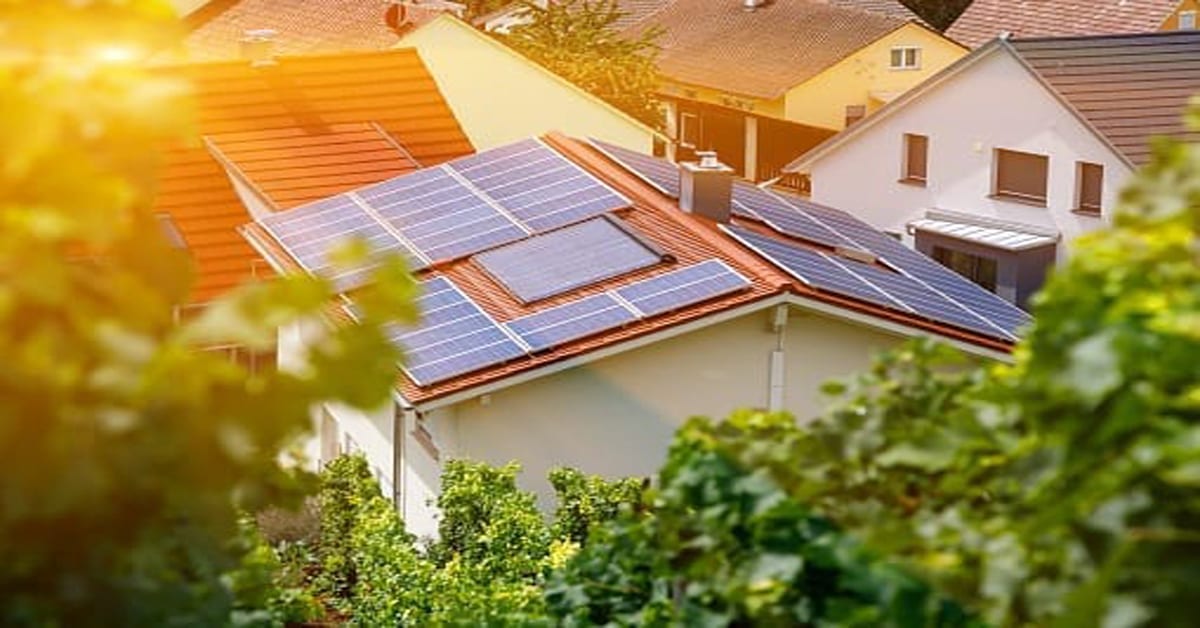Green homes. They are very attractive and popular in the modern times. And no, I don’t mean homes painted green. Green homes are households that live sustainably. From tiny homes to solar-powered homes, people worldwide are making their households more eco-friendly.
Why should we make our households green homes? Why should you go green?
To go green is a common term that refers to an eco-friendly lifestyle. But what does going green mean? It means committing to sustainable living. This includes changing the way we take care of our environment and conserve energy. It means placing more importance on conservation efforts with regards to our choices about how we live our lives. Simply put, to go green is to live consciously of how every action impacts the environment and make sure that you live as less impact as possible.

There are multiple benefits to going green. You can live healthier, safer and with more cash on your bank. People who go green also For those who make energy-saving changes through switching to green homes, this may even mean receiving substantial discounts on certain types of homeowners insurance like HO7, and discounts on utility bills.
You may have energy-efficient appliances, water heaters, furnaces, and other systems such as tankless water heaters and solar panels. Your family may choose to reduce their energy consumption by saving water or reducing electricity usage. Whatever you are doing to preserve the planet, you could reap the benefits in more ways than one.
Interested in green homes? Take a look at the different ways you can make your home more sustainable and save a lot in the process.
LEED Certified Homes
Leadership in Energy and Environmental Design (LEED) certified homes are environmentally friendly, higher quality homes that have been designed with certain standards and rating classifications in mind.
LEED homes are all-out, no-expense-spared, energy-efficient homes that don’t simply focus on one aspect of green living. These homes start with using green materials for building and are thoroughly designed to make conservation easy and effective. As such, even the air quality and reduction of allergens is an overall goal when making sure a house is LEED certified.
Besides the obvious benefits of living in a LEED certified home, there are also homeowners insurance companies that give discounts for environmental preservation. However, these discounts may not be offered by all companies so do your research. Don’t just assume that your house is covered by your insurance company.
LEED homes can save owners in more areas than just homeowners insurance rates. Other money-saving benefits include:
- Cleaner air quality/reducing air pollution in-house
- Insulated to save on heating/cooling costs
- Low-flow water features such as faucets and shower-heads
- Higher overall resale value of the home
While the eventual overall savings is there, the upfront building costs may be higher when building an eco-friendly home. Materials are more expensive, and finding a contractor that is a certified LEED home builder may also come with a higher price tag.
But it is worth to save up to invest in green homes because it will be better for your wallet and your overall life in the long run.
Energy-Efficient Home Plans
Your dream home may be completely eco-friendly. You imagine living in a self-sustained home that isn’t dependent on utilities and is completely designed to be conscious of environmental factors. What you may not know is that the style of home you choose can determine just how efficient you can make it.
There are companies that specialize in building energy-efficient homes and offer a variety of home-building plans to help the energy-conscious build their dream home. Everything from insulation to sink faucets can be chosen to reduce energy consumption. Before you build, ask your builder if they have any recommendations for an eco-friendly home.
Newer, energy-efficient homes may offer discounts on homeowners insurance, but the cost of insuring, without the discounts, may be higher than other homes due to the replacement value and quality of the materials used.
How to Make Your Household A Green Home
If you aren’t able to afford a LEED-certified home, there are ways to still make a green home and receive insurance discounts. First, get energy-efficient appliances. Energy Star-rated appliances often translate into savings on insurance premiums. This is a simple upgrade that helps you do your part to preserve the planet.
There are environmentally friendly choices in flooring, paint choices, and even heating/cooling systems. All have the potential to bring some savings.
Other ways to decrease your energy footprint include efficient lighting and saving on your electricity consumption, water use, recycling, and even walking instead of driving when possible.
Living zero waste also has savings benefits in a variety of areas.
If you have not yet started going zero waste, start small. Look at the different rooms in your home and figure out ways to start saving today. For example, consider investing in a thermostat to regulate your home’s temperature.
One simple eco-friendly money-saver is to unplug any appliance not in use. Especially small electrical appliances in the kitchen. Do the same in the kitchen with your can opener, coffee pot, and toasters. Remember, as long as they are plugged, they consume electricity and can even lead to fires if left unattended.
There are so many simple ways to go green. Other ways to have green homes include composting, recycling, cleaning your appliances regularly, and minimizing your home. While not all these things won’t get you a discount on your home insurance, you still save money and lessen your environmental impact in your household.
Insurance for Green Homes
There is a link between the cost of living in green homes and the decreased risk they pose as far as homeowners insurance is concerned. There are also green insurance policies that will cover replacing defects and rebuilding damaged homes to meet green standards.
Keep in mind that your idea of green living and what your insurance provider considers green living may be two different things. It is best to ask questions about what constitutes green construction and what is actually classified as green. This standard is always changing as new ideas, new materials, and new conservation techniques are identified.
Most insurance companies do recognize energy-efficient replacement materials as eligible for some sort of discount or Energy Star rating. The best way to find out if your efforts are going to save you money is to contact different homeowners insurance companies and compare their policies. Ask what discounts are available and shop for the best rates with the best discount.
Conclusion
Going zero waste or going green is one of the best ways to live. It helps you save money and help protect Mother Nature at the same time. It may mean making some creative changes to your home and to your habits. Some shifts to sustainable living are expensive yet yield savings in other ways. Consider how you and your family can do your part to conserve energy, water, and decrease your carbon footprint.
About the co-author:

Robyn Flint writes and researches for the insurance comparison site, ExpertInsuranceReviews.com, and she is a licensed realtor with over seven years of experience helping buyers and sellers navigate the real estate market. Robyn is also a freelance writer and a published author.





One Comment
Leave a ReplyOne Ping
Pingback:How To Transition To An Eco-Friendly Home - Zero Waste Lifestyle System